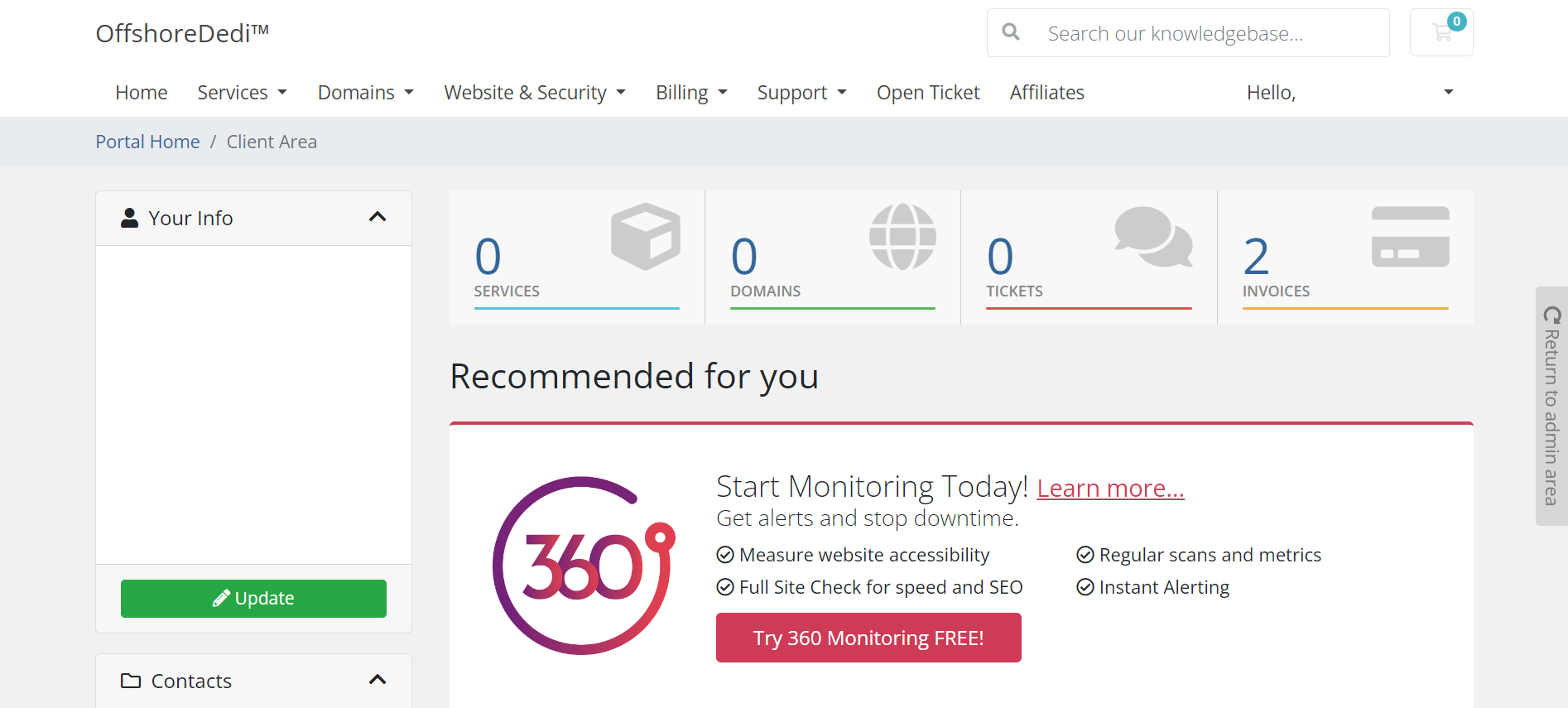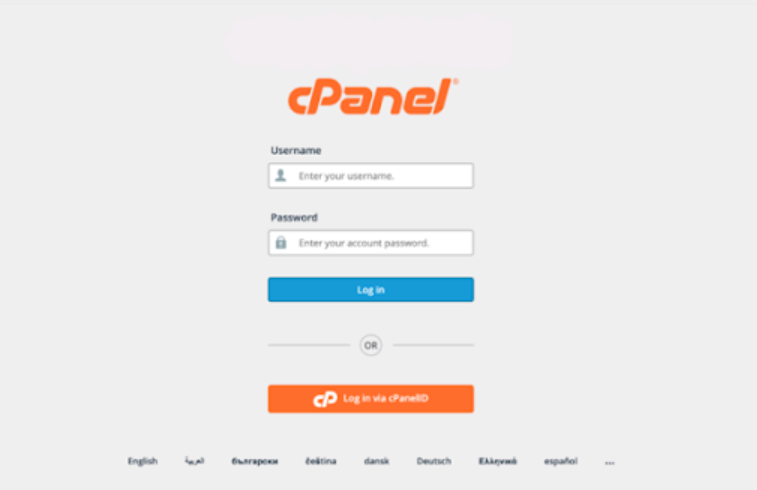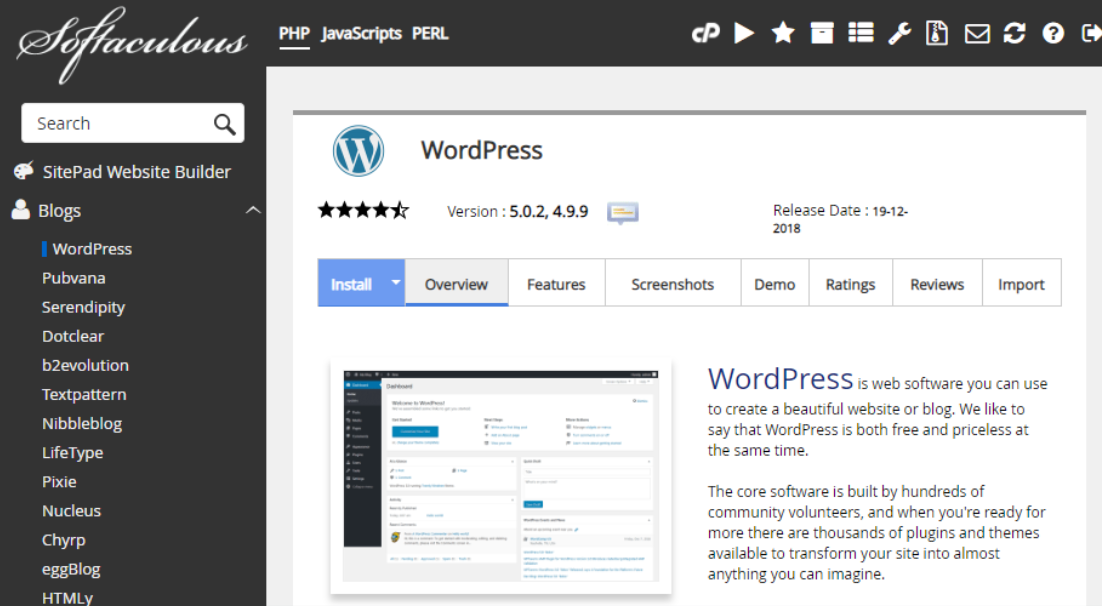Are you looking to quickly set up a WordPress website using Cpanel? Look no further! In this guide from offshorededi, our team will walk you through the process of streamlining your website setup with a quick and easy WordPress installation using Cpanel.
Understanding WordPress and Cpanel
WordPress stands as a leading content management system (CMS), beloved for its flexibility and ease of use. It drives an immense range of sites, from individual blogs to complex business websites, making it a versatile decision for designers and business entrepreneurs the same. The center of WordPress’ allure lies in its open-source nature, permitting clients to alter and customize their websites however much they might want. This customization is reinforced by a broad library of subjects and modules, empowering clients to fit their sites to their particular necessities without requiring broad coding information.
Cpanel, in contrast, operates as a web hosting control panel offering a graphical interface and automation tools designed to simplify the process of hosting a website. It is prestigious for its natural dashboard, through which clients can manage domains, sort out web records and files, make email accounts, and supervise databases easily. Cpanel’s solidarity lies in its capacity to demystify the complexities of web hosting management, making it open to clients of all ability levels.
The synergy between WordPress and Cpanel is what makes setting up a website a streamlined experience. Cpanel facilitates the installation of WordPress through automated installers like Softaculous, minimizing the technical challenges traditionally associated with website setup. This incorporation enables clients to zero in erring on the imaginative parts of building a site, like designing and content creation, as opposed to being hindered by the details of hosting management and installation.
By saddling the joined power of WordPress and Cpanel, clients can carry on with their site creation process with certainty. The effortlessness of Cpanel matched with the vigorous functionality of WordPress establishes an ideal climate for site improvement, permitting clients to send off and deal with their online presence effectively. This organization highlights the significance of open innovation in democratizing the web, making it simpler for anybody to rejuvenate their thoughts on the web.
Preparing Your Hosting Environment
Before embarking on the exciting journey of setting up your WordPress website, it’s crucial to have a solid foundation in place. This begins with securing a hosting account that provides Cpanel access, a pivotal step in ensuring a smooth WordPress setup process. If you’re in the initial stages and haven’t yet chosen a hosting provider, it’s vital to select one that not only supports WordPress but also offers Cpanel, given its user-friendly interface and comprehensive management tools.
After selecting a hosting provider, the next step involves activating your hosting account. This typically involves registering or transferring your domain name to the provider and following their specific setup instructions. It’s important to ensure that your hosting plan meets the requirements for running WordPress, including PHP, MySQL, and HTTPS support.
Once your hosting account is active, familiarize yourself with the Cpanel dashboard. This is where you’ll manage key aspects of your website, such as domain settings, email accounts, and file management. A tour or tutorial offered by your hosting provider can be incredibly helpful at this stage to acquaint you with the layout and functionalities of Cpanel.
It’s also advisable to check if your hosting account includes any pre-installation requirements or recommendations for WordPress. A few providers offer optimization tools or specific PHP configurations to upgrade the presentation and performance of WordPress sites. Guaranteeing these settings are enhanced and optimized before continuing with the WordPress establishment can contribute fundamentally to the general health and speed of your site.
In synopsis, setting up your hosting environment is about something beyond pursuing and buying a hosting account. It requires smart thought of the provider’s similarity with WordPress and Cpanel, setting up your domain, and optimizing your hosting settings for the best WordPress execution. Taking these preparatory steps seriously lays the groundwork for a successful and hassle-free WordPress website setup.
Navigating to the WordPress Installation in Cpanel
Upon entering your Cpanel account, direct your attention towards the “Softaculous Apps Installer” or a similar application installation service that your hosting might offer. This tool is crucial for initiating the WordPress setup and is typically located within the software section of your Cpanel dashboard. Once you locate it, search for the WordPress logo or the direct link titled “WordPress” among the available applications.
Clicking on this will lead you to the WordPress installation interface. Here, the system will guide you through several steps requiring input on various aspects of your site, including choosing the domain under which WordPress should be installed. If you have multiple domains associated with your hosting account, ensure to select the appropriate one from the dropdown menu.
This section is also where you will specify whether you wish to install WordPress in the root directory of your domain or within a subdirectory, depending on your site’s structure and purpose. Keep in mind that these initial selections lay the groundwork for your site’s configuration and are an integral part of the setup process, guiding you seamlessly through the rest of the installation.
Customizing Your WordPress Installation Settings
The process of setting up your WordPress site with Cpanel reaches an exciting phase when you arrive at customizing your WordPress installation settings. This step allows for personalization and tailoring of your site to meet your specific needs and preferences. Within the WordPress installation interface, provided by the Softaculous Apps Installer or a similar tool in your hosting account, you have the opportunity to dive into the details that will define your site’s identity and functionality.
Firstly, it is critical to lay out a strong administrative foundation for an establishment. This includes choosing a special administrator username and a solid hard-to-crack password, crucial for securing admittance to your WordPress dashboard. Avoid common usernames like “admin” to enhance security. Additionally, you will input your email address, which will be associated with this admin account for site management and recovery purposes.
Plugins and themes address the substance of your WordPress site’s appearance and abilities. During the installation process, you can peruse and choose a topic for the theme that lines up with your site’s motivation and tasteful allure. Whether you’re setting up a blog, a portfolio, or a business website, there’s a theme to match your vision. Remember, the theme you choose now can be changed later, so feel free to experiment with what best suits your initial launch.
Besides, this customization step reaches out to plugins – useful tools that add usefulness, functionality, and features to your website. You should consider installing essential plugins like those for Social media integration, SEO, site backups, and security. While the temptation might be to add numerous plugins right from the start, focus on what’s essential for your site’s launch; you can always add more as your site grows and your needs evolve.
In essence, customizing your WordPress installation settings through Cpanel is a blend of securing your admin access, selecting a theme that reflects your site’s purpose, and installing plugins that enhance functionality. This strategic personalization sets a strong foundation for your site’s success.
Activating WordPress and Final Steps
Once you’ve personalized your WordPress installation through Cpanel, the next step is initiating the actual setup on your hosting account. To do this, navigate to the bottom of the customization page where you’ll find the “Install” button eagerly awaiting your click. This action triggers the WordPress installation process, which, thanks to the preparatory work you’ve done, should proceed smoothly and efficiently.
As the installation begins, a progress bar may appear, giving you visual confirmation that your WordPress site is on its way to being realized. This process usually takes just a few moments, during which the system configures your selections, sets up the database, and applies the specified settings to launch your WordPress site.
Upon completion, the screen will update to display a success message, indicating that the installation has been completed. This message is more than just a notification; it contains vital links – one leading directly to your new WordPress website, and another to the administrative dashboard of your site. The administrative link is particularly important as it grants you access to the backend of your WordPress site, where you can start crafting your content, adjusting your settings further, and beginning the journey of managing your online presence.
This step marks the change from setup to content creation to management, moving you into the universe of WordPress with your website formally live and openly accessible to the web. A huge achievement makes way for the following period of your site’s turn of events, where you will explore themes, plugins, and the myriad of features that WordPress offers to make your site genuinely yours. Keep in mind, that the journey of your WordPress website has quite recently started, and there’s something else to investigate, explore, and carry out as you develop and advance your online presence.
Essential First Steps After Installation
Embarking on the journey with your newly minted WordPress site sets the stage for the crucial steps that follow. One of the immediate actions to take involves delving into the settings to ensure your site’s foundation is as robust as it can be. This includes fine-tuning your permalink structure for SEO benefits, a task that helps search engines and visitors understand and navigate your site more efficiently.
Security should be your next focal point. Implement strong passwords for all user accounts and consider the installation of security plugins that protect against common threats and vulnerabilities. This preemptive approach guards your site against unauthorized access and potential breaches.
Equally important is the activation of a caching plugin to enhance site performance. Fast loading times not only improve user experience but also positively impact search engine rankings. Alongside, analyzing and optimizing images for web use will further boost your site’s speed and performance.
Another fundamental step is to interface your site to a believed source like Google Analytics or a nearby help. This allows you to follow your guest’s details, and conduct, giving experiences of information into how clients cooperate with your site when they visit it, which can illuminate better plan and content decisions.
All in all, setting up significant pages lays the reason for your site’s development and client route making a locking-in “About Us” page offers guests a brief and nitty gritty investigate what’s really going on with your site or what your business remains on, while a “Contact” page ensures that you’re effectively reachable, developing correspondence with your group.
Don’t overlook the creation of a privacy policy page as well, which is not only good practice but a requirement in many jurisdictions, particularly if you’re collecting any form of user data from your visitors.
By addressing these areas promptly after installation, you position your WordPress site on a trajectory toward success, visitor readiness, and growth optimization.
Tips for Maintaining Your WordPress Site
Keeping up with the health and execution of your WordPress site is urgent for guaranteeing its life span and security. To accomplish this, regularly practice it intermittently check for and apply updates to your WordPress core, plugins, and themes. These updates frequently incorporate security patches and performance upgrades that can reduce weaknesses and improve your site’s usefulness.
Backups are your security net in the digital web world. Execute a technique for backing up regularly your site’s information, including posts, pages, and the database. This can be worked with through different plugins or your hosting provider’s backup arrangements. Having a new backup regularly guarantees you can reestablish your site to function normally again if there should be an occurrence of hacking, accidental deletions, or data corruption.
Monitor your site’s exhibition and security by utilizing apparatuses that are expected. Believed organization administrations like Google PageSpeed encounters can offer experiences of information into your site’s stacking velocity and educate you concerning suggested updates and upgrades, while security modules can channel for any sort of malware and screen for any dubious action, offering inner serenity concerning your site’s wellbeing.
Engage with your audience through comments and feedback but ensure to moderate comments to prevent spam from cluttering your site. This not only keeps your website clean but also enhances the user experience.
Last but not least, remain informed about the most recent WordPress patterns and best practices. The WordPress community is lively and continually developing, offering a wealth of resources, forums, and websites that can give important hints and tips for website maintenance and optimization. Staying informed concerning these advancements can inspire new groundbreaking ideas and enhancements for your site, keeping it relevant and new. Below is a video for our user’s convenience.



